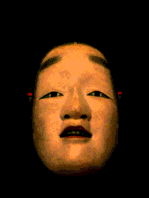
Concept
References
Precedents
Story
Style
Still for print [8x10 300dpi]
Preview
| Download
Character Sheet
Storyboard
Animatic 01
FINAL
Download paper
Back
Mini-thesis - Final project for studio
Here are some of the resources and references I looked into, covering topics on:
Deception
Lie
Cognitive Science
Facial Expressions
Masks
Lies
What is a lie? According to The American Heritage Dictionary of the English Language noun definition of lie:
lie2 noun
1. A false statement deliberately presented as being true; a falsehood.
2. Something meant to deceive or give a wrong impression.
There are several categories and methods of lying. To give an example, here a list of common use of methods compiled by contributors to Wikipedia : big lie, bluff, barefaced lie, contextual lie, economical with the truth, emergency lie, exaggeration, fabrication, jocose lie, lie-to-children, lying by obsolete signage, lying by omission, lying in trade, lying through your teeth, misleading or dissembling, careful speaking, noble lie, perjury, puffery, compliments and false reassurances, and white lie. Yet why and how do we lie? Avoiding discussing detailed analysis of cognitive science, to quote well-known psychologist Paul Ekman well known for deceiving expressions," Most of the time we lie out of laziness or timidity." In order to recognize a lie, one's body gestures and facial expressions are examined to show signs of "leakage" or a "tell." In 1972, Ekman comprised a list of basic universal expressions which includes: anger, disgust, fear, happiness, sadness, and surprise. Here are some images which helped me in character design:

From these facial expressions led to the research into masks.
mask - noun
1. a covering for the face or part of the face, to conceal the identity
2. anything that conceals or disguises
Masks are used in several different places and various context, whether for performing amusement, protection, or fashion; they all fall under the category of concealment and disguise. In relationship to the basic facial expressions mentioned by Ekman, most masks are designed to meet and resemble along these emotions regardless of culture or purpose. Just to paste a few of the assortment and range of masks:

Although these masks and facial expressions were looked into and incorporated into my initial designs, some of the feedback from peers were that the designs were misguiding into different subjects like cultural differences and stereotypes or cosplay and superhero trends. This lead me to seek designs that are more similar yet at the same time vastly different. The Noh mask is the ideal example. Noh(пр) is the classic Japanese dance and drama theater performance. What is unique about the Noh mask is that depending on the angle of the mask the viewer reads the expression differently. In the Noh performances, with a tilt of the head the actor can shift from a joyful face to a crying expression with the help of lighting and the angle shown to the viewers.
Here is an example of the Noh Mask. The camera is fixed while the mask tilted.

I was greatly influenced and inspired by this concept and started drawing images that shared and derived from this idea.
http://en.wikipedia.org/wiki/mask
http://en.wikipedia.org/wiki/lie
http://www.dgps.de/fachgruppen/methoden/mpr-online/issue4/art3/node9.html
Paul Ekman. Basic Emotions. Handbook of Cognition and Emotion.
http://www.wnyc.org/shows/radiolab/episodes/2008/02/29
http://www.merriam-webster.com/dictionary/mask
http://www.kasrl.org/noh_mask.html